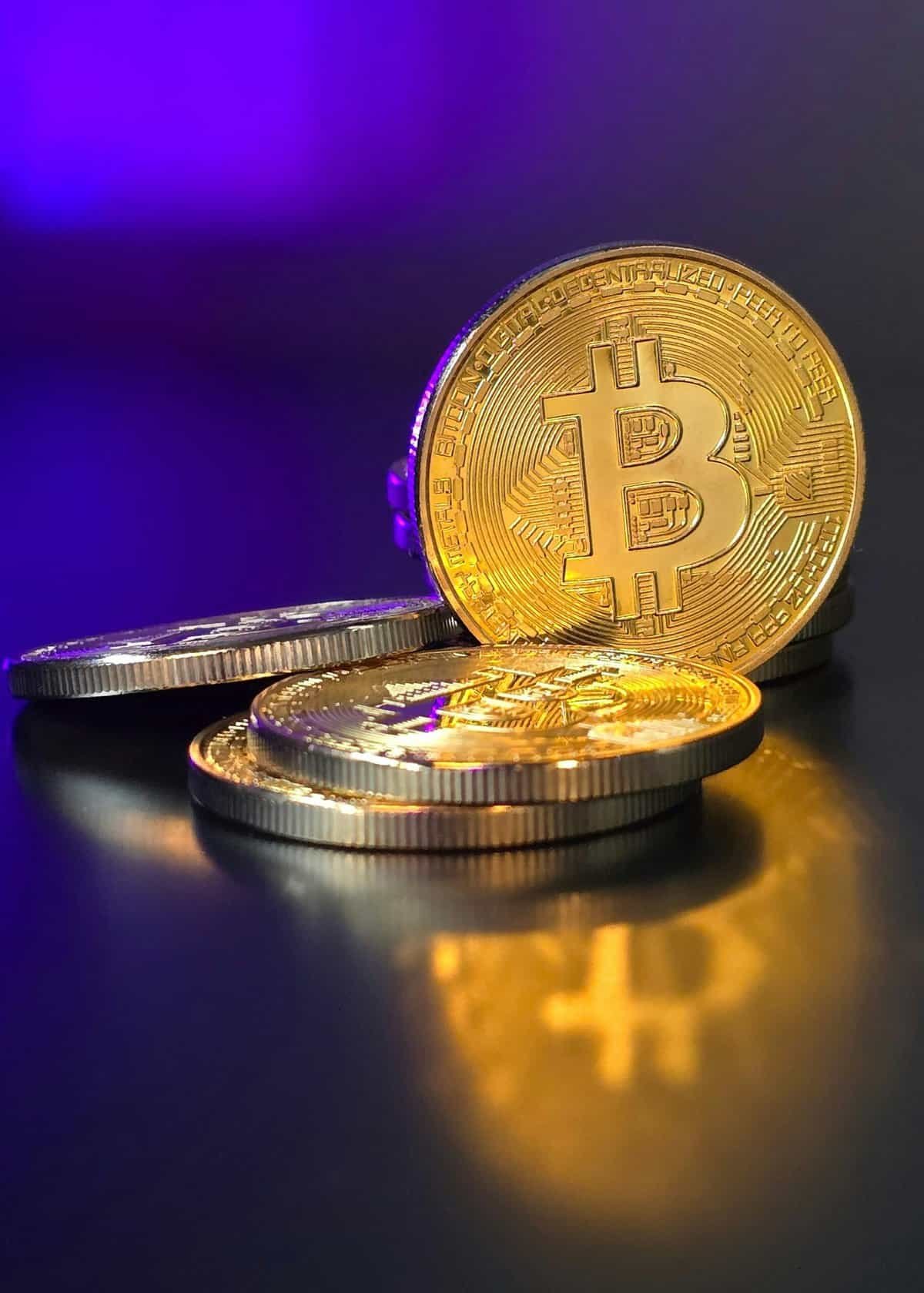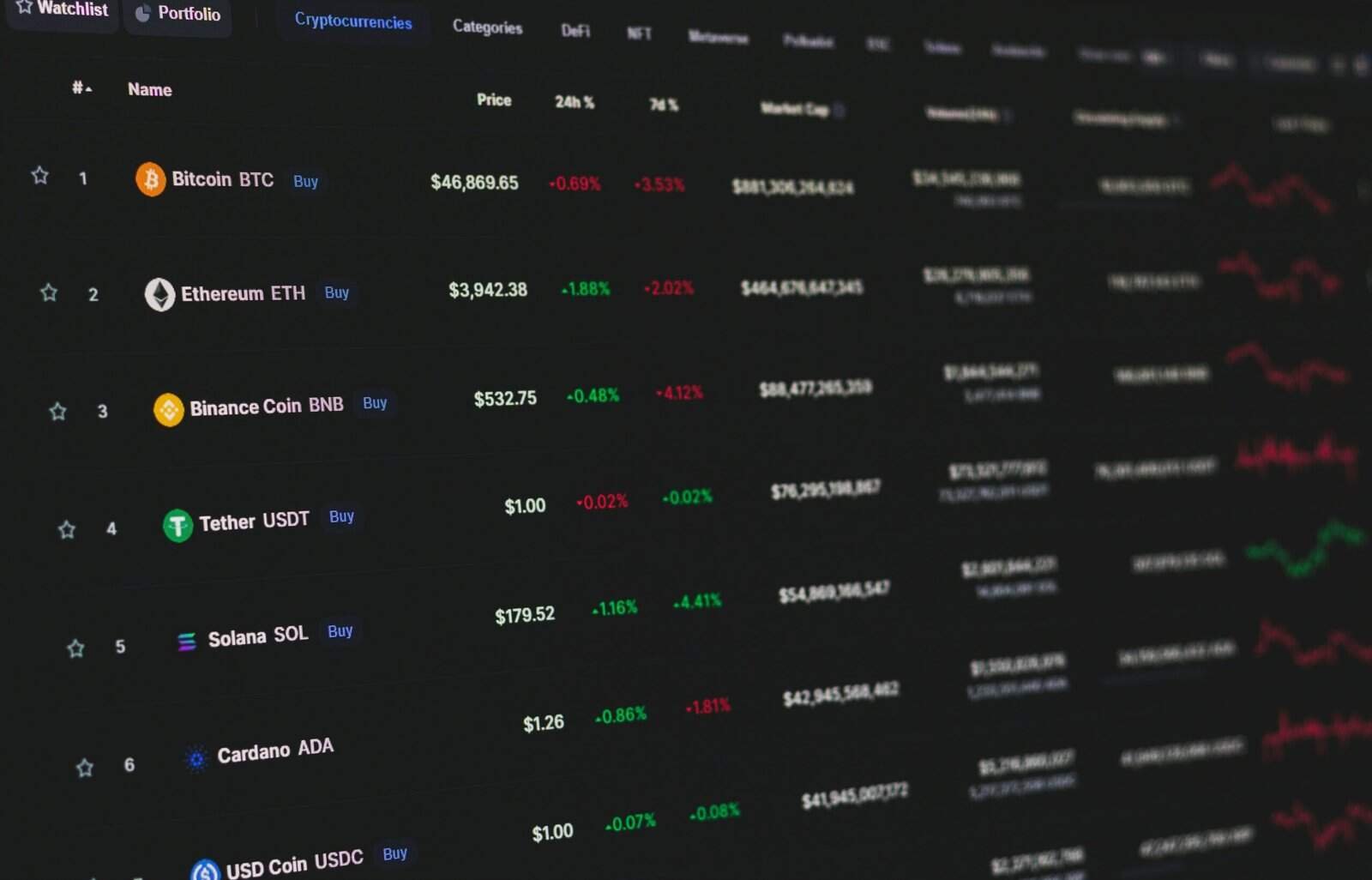Which type of crypto exchange will serve your needs best — a centralized exchange or a decentralized one?

How Do I Choose Between Centralized And Decentralized Exchanges?
Choosing between centralized exchanges (CEXs) and decentralized exchanges (DEXs) can feel overwhelming, but you can make a confident decision by matching the exchange type to your goals, risk tolerance, and technical comfort. This guide breaks the choices down into practical factors so you can pick the right platform for trading, storing, earning, or accessing new tokens.
What is a Centralized Exchange (CEX)?
Centralized exchanges are platforms run by companies that custody funds, match orders, and provide user interfaces and services similar to traditional brokerages. You create an account, complete KYC (often), deposit funds, and trade through the exchange’s internal systems.
How centralized exchanges work
Centralized exchanges act as intermediaries that maintain custody of user assets and process trades on internal order books or internal matching engines. You interact with the exchange through its website or app, and the exchange manages ledger entries representing your balances.
Common advantages of centralized exchanges
CEXs usually offer high liquidity, fast order execution, advanced trading tools (limit, stop, margin), customer support, and insurance policies in some cases. That makes them convenient for active trading, large orders, and beginners who prefer a familiar UI.
Common disadvantages of centralized exchanges
Because you do not control the private keys, custody risk exists: the exchange could be hacked, mismanaged, or face withdrawal restrictions. Centralized platforms are also subject to regulatory and KYC requirements, which can limit privacy and access.
Typical use cases for CEXs
You’ll prefer a CEX when you need fiat on/off ramps, fast execution for large trades, margin or derivatives trading, and a polished mobile or web interface. Institutions and frequent traders often favor CEXs for these reasons.
Examples and reputation considerations
Popular centralized exchanges include Binance, Coinbase, Kraken, and Gemini. When you pick a CEX, check its security history, insurance coverage, regulatory status, and custody practices.
What is a Decentralized Exchange (DEX)?
Decentralized exchanges run on blockchain networks and let you trade directly from your wallet without a central custodian. Trades are executed on-chain through smart contracts or via off-chain order relays with on-chain settlement.
How decentralized exchanges work
DEXs use smart contracts to match trades, settle swaps, and hold liquidity in pools. Automated market makers (AMMs) like Uniswap and SushiSwap price assets algorithmically, while some DEXs offer on-chain order books or hybrid designs.
Common advantages of decentralized exchanges
With a DEX you retain custody of your funds, have direct access to permissionless token listings, and can trade without a centralized gatekeeper. DEXs can also offer strong privacy and composability with other DeFi protocols.
Common disadvantages of decentralized exchanges
DEXs come with smart contract risk, potentially high transaction (gas) fees on congested networks, lower liquidity for some tokens, and a steeper learning curve. If you lose your private keys, there’s usually no recovery.
Typical use cases for DEXs
You’ll pick a DEX when you want immediate access to new or niche tokens, permissionless trading, on-chain yield strategies, or when you prefer to keep custody of your assets. Many DeFi users and developers favor DEXs for composability and innovation.
Examples and architecture variations
Widely used DEXs include Uniswap, SushiSwap, PancakeSwap, Curve, and 0x-based orderbook implementations. Layer 2 DEXs and cross-chain DEXs are emerging to reduce fees and expand token reach.
Key differences at a glance
Below is a table summarizing the main distinctions so you can quickly compare the two models.
| Feature | Centralized Exchange (CEX) | Decentralized Exchange (DEX) |
|---|---|---|
| Custody | Exchange holds your private keys | You hold your private keys |
| KYC / Regulation | Often required | Often optional (depends on chain and frontends) |
| Liquidity | Typically higher for major pairs | Can be lower for niche tokens; AMMs reduce immediate match dependency |
| Fees | Trading fees, withdrawal fees; usually predictable | Protocol fees + on-chain gas; can be unpredictable |
| Speed | Fast off-chain matching | Slower when on-chain; depends on network congestion |
| Asset listings | Curated by exchange | Permissionless listings; many tokens available |
| Privacy | Lower privacy due to KYC | Higher privacy if you use non-custodial wallets |
| Security model | Custodial security, central point of failure | Smart contract risk, wallet security is user responsibility |
| Advanced tools | Margin, futures, OTC desks | Limited on-chain derivatives; growing DeFi derivatives |
| Best for | Beginners, high-volume traders, fiat access | DeFi users, privacy-focused, token explorers |
| Recourse | Support and dispute resolution possible | Little to no recourse for lost funds |

How to choose based on your goals
Your intended use is the single most important factor for choosing an exchange. Below are common goals and which exchange type generally fits best.
You want to trade often and need advanced tools
If you trade frequently, require margin or derivatives, and need advanced charting, a centralized exchange usually serves you better. CEXs offer deep liquidity, tight spreads, and professional-grade tools that make active trading efficient.
You want to hold long-term and prioritize safety of keys
If you plan to HODL for years and want to control your private keys, you should think about non-custodial storage and consider using DEXs for occasional trades while keeping assets in your own wallet. However, many long-term holders use CEX custodial services for convenience and insured custody.
You want access to new tokens and permissionless launches
When your goal is to access newly listed tokens, participate in decentralized launches, or provide liquidity for yield, a DEX is usually the best choice. DEXs support permissionless token creation and immediate trading.
You prioritize privacy or censorship resistance
If privacy, reduced KYC friction, or resistance to censorship matters, DEXs provide more flexibility. Be mindful that full anonymity requires careful operational security beyond merely using a DEX.
You need fiat on/off ramps or institutional support
If you require fiat deposits, regulated custody, tax reports, or institutional facilities, centralized exchanges are typically more suitable. They link to banking rails and provide compliance-friendly services.
Factors to evaluate when choosing an exchange
When comparing exchanges, evaluate the following factors to determine which platform aligns with your needs and risk profile.
Security and custody model
Ask whether the exchange holds your keys or whether you control private keys. CEXs can offer institutional-grade custody and insurance, but they also concentrate risk. With DEXs, you control keys but must manage them securely.
Fees and price impact
Consider both explicit fees (trading fees, withdrawal fees) and implicit costs like spread and slippage. On DEXs, price impact and AMM slippage can dominate costs for large trades, while CEXs may offer lower spreads for major pairs.
Liquidity and slippage
Check order book depth on CEXs and pool sizes on DEXs. Higher liquidity reduces slippage on large orders. If you plan to move big amounts, prefer venues with proven deep liquidity.
Asset availability and token listings
If you need mainstream assets, CEXs will cover most. If you want experimental or freshly launched tokens, DEXs usually list them faster and with fewer barriers.
User experience and tooling
Evaluate the UI, mobile apps, order types, charting tools, and APIs. CEXs generally provide more polished interfaces and customer support; DEXs can be more technical but integrate with wallets and DeFi tools.
Regulatory compliance and KYC
Decide whether you’re comfortable sharing identity information. KYC enables fiat services and regulatory protections but reduces privacy. For some jurisdictions, regulatory choices may dictate your options.
Privacy and anonymity
Measure whether you need to minimize on-chain KYC trails. DEXs offer more routes to privacy, but remember that blockchain transactions are public and can be linked to identities if you’re not careful.
Transaction speed and blockchain costs
On-chain DEX trades are bound by network throughput and gas fees. If you need instant, cheap trades, CEXs typically win. If you can tolerate on-chain settlement, DEXs can be acceptable, especially on Layer 2s.
Interoperability and cross-chain support
If you hold assets across multiple chains, check whether the exchange supports bridging or multi-chain operations. Some DEXs and aggregators handle cross-chain swaps; some CEXs offer custody for many chains.
Customer support and dispute resolution
CEXs usually provide customer support and potentially reimbursement in certain incidents. DEXs offer little to no formal support; resolution often depends on community governance and smart contract upgrades.
Transparency and audits
For DEXs, smart contract audits and open-source code are important. For CEXs, you’ll want transparency around reserves (proof-of-reserves), regulatory filings, and security audits.

Practical checklist: Questions to ask before you sign up
Use this checklist to assess any exchange before depositing funds. The table highlights the question and why it matters.
| Question to ask | Why it matters |
|---|---|
| Who holds your private keys? | Defines custody risk and your control over funds. |
| What are the total fees? | Includes trading fees, withdrawal fees, and network costs. |
| How deep is liquidity for your trading pair? | Affects slippage and price impact on large trades. |
| Does the exchange require KYC? | Impacts privacy and fiat access. |
| Is there insurance or proof-of-reserves? | Helps assess counterparty risk and solvency. |
| Are smart contracts audited (for DEXs)? | Reduces, but does not eliminate, exploitable bugs. |
| How responsive is customer support? | Important for transactional issues or disputes. |
| Are withdrawals restricted or subject to limits? | Limits can affect access to your funds in time-sensitive situations. |
| What security measures are in place (2FA, cold storage)? | Lowering attack surface reduces risk of hack. |
| What is the platform’s regulatory status? | Affects legal protections and operational continuity. |
Risk management and safety tips
Regardless of the exchange you choose, apply good safety practices to protect your funds and data.
Use strong authentication and hardware wallets
Enable two-factor authentication (2FA) and, when possible, use hardware wallets for non-custodial access. For CEX accounts, combine 2FA with a strong, unique password.
Separate funds and limit exposure
Don’t keep all your assets on a single exchange. Keep only trading funds in hot wallets and store larger holdings in cold wallets or hardware wallets under your control.
Test with small amounts first
Before depositing large sums or interacting with a new smart contract, make a small test transaction to verify addresses, fees, and workflows.
Verify contract addresses and official links
Only interact with verified smart contract addresses and bookmark official exchange URLs to prevent phishing. Confirm announcements and links from official channels.
Review audits and community reports
For DeFi platforms, read smart contract audits, bug bounty details, and community alerts. For CEXs, check proof-of-reserves, past incidents, and user reviews.
Be cautious with approvals and unlimited allowances
When using DEXs, avoid granting unlimited token allowances to routers or contracts. Use time- or amount-limited approvals when supported.
Keep backups and practice key recovery
Maintain encrypted backups of seed phrases and store them offline in secure locations. Consider multi-signature or custodial options for high-value assets.

Cost comparison examples
Understanding how costs add up will help you choose the most economical option for different scenarios.
Scenario 1 — Small retail trade ($50)
- CEX: Trading fee 0.1% = $0.05; potential withdrawal fee $2–$10 depending on asset. Net cost: small.
- DEX on high-fee chain (Ethereum): Swap fee 0.3% = $0.15; gas could be $10–$50. Net cost: dominated by gas, may be uneconomical.
Scenario 2 — Medium trade ($5,000)
- CEX: Trading fee 0.1% = $5; tight spread; withdrawal fee depends. Net cost: modest.
- DEX (AMM) on Layer 2: Swap fee 0.3% = $15; low gas fees (negligible). Net cost: manageable but potentially higher slippage than CEX.
Scenario 3 — Large trade ($250,000)
- CEX: Best venue due to deep liquidity and OTC desks; spread and fees minimal relative to trade size. Net cost: low.
- DEX: Price impact could be substantial unless pool is enormous. Not recommended.
Use the table below to compare typical cost drivers.
| Cost driver | CEX | DEX |
|---|---|---|
| Trading fee | Fixed percentage; discounts for volume or native tokens | Protocol fee per swap; variable |
| Gas / network cost | Minimal; off-chain matching | On-chain gas for transactions (varies by chain) |
| Slippage / price impact | Lower for liquid pairs | Can be significant for large or illiquid swaps |
| Withdrawal / bridging fee | Exchange sets fee | Bridge fees + on-chain costs |
| Hidden costs | Spread, deposit/withdraw delays | Impermanent loss for liquidity providers |
When to prefer centralized exchanges
Consider a CEX when you have these priorities:
- You trade frequently and need margin, futures, or advanced order types.
- You require fiat deposit and withdrawal functionality with banking rails.
- You want fast execution and minimal slippage for major trading pairs.
- You need customer support, dispute resolution, or custodial insurance.
- You prefer a polished interface and easier onboarding for beginners.

When to prefer decentralized exchanges
Choose a DEX when these factors matter more to you:
- You want to retain custody of your funds and control private keys.
- You need permissionless access to newly minted or niche tokens.
- You plan to participate in liquidity provision, yield farming, or composable DeFi strategies.
- You prioritize privacy and reduced reliance on centralized gatekeepers.
- You’re comfortable managing wallet security and potentially higher transaction complexity.
Hybrid options and emerging models
The landscape is evolving with hybrids that combine the best of both worlds. Some centralized exchanges offer self-custody features or integrate with DeFi; some DEXs provide fiat on-ramps and compliant frontends. Layer 2s and cross-chain aggregators also blur the line by reducing gas fees and improving UX for on-chain trading.
Aggregators and liquidity routers
DEX aggregators route trades across multiple pools and chains to minimize slippage and fees, improving outcomes for users who prefer non-custodial trading. These tools can make DEX usage more efficient and cost-effective.
Non-custodial interfaces with custodial backing
Certain platforms let you trade non-custodially while using custodial liquidity providers behind the scenes, offering hybrid convenience. Always verify the custody model and read the fine print.
Common myths and misconceptions
Addressing common misunderstandings helps you make a clearer choice.
Myth: DEXs are always safer because you hold your keys
Holding keys removes custodian risk, but it places the entire security burden on you. Smart contract bugs, rug pulls, and user mistakes can still cause irreversible losses.
Myth: CEXs are always better for beginners
CEXs have simpler interfaces, but beginners also face custodial risks, KYC, and potential withdrawal limits. Evaluate both the learning curve and the trade-offs.
Myth: All DEX tokens are scams
While DEXs list many unvetted tokens, not every DEX token is malicious. Use caution, DYOR (do your own research), and look for audit reports, tokenomics clarity, and community trust before engaging.
Step-by-step decision framework
Follow these steps to make a practical, personalized decision.
- Define your primary goal: trading, learning, yield, custody, or token discovery.
- Assess your technical comfort: are you confident with wallets, signing transactions, and managing seeds?
- Quantify trade size and frequency: large institutional trades often require CEX liquidity; small occasional swaps may work fine on DEXs.
- Check accessibility needs: do you need fiat on/off ramps or KYC-free access?
- Evaluate security appetite: do you want custodial insurance or full control with key management?
- Calculate expected costs: include trading fees, slippage, and network fees for realistic scenarios.
- Research reputation: read audits, community feedback, regulatory status, and support responsiveness.
- Test with small amounts: validate addresses, check withdrawal flows, and confirm operational assumptions.
- Establish a fund management plan: allocate funds between custodial and non-custodial storage based on risk tolerance.
- Reassess regularly: the crypto ecosystem changes fast; revisit your choice as new features and regulations emerge.
Additional resources and tools
While this guide aims to be comprehensive, you’ll benefit from using tools to supplement your decision-making.
- Fee calculators for specific chains and swaps to estimate gas and slippage.
- Aggregators to compare DEX route quotes (e.g., 1inch, Matcha).
- Proof-of-reserves reports and security disclosures for CEXs.
- Audit reports and bug bounty platforms for DEX smart contracts.
- Community forums and developer channels for real-time feedback.
Frequently asked questions
Can you use both CEX and DEX simultaneously?
Yes. Many users split functions: they keep long-term holdings in cold wallets, use CEXs for fiat access and high-volume trades, and use DEXs for DeFi participation and token discovery.
Is one type always cheaper?
No. The cheapest option depends on trade size, asset, and network conditions. DEXs can be cheap on low-fee chains, but gas spikes can make them expensive. CEXs are often more cost-effective for high-volume or institutional trades.
Are DEXs legal where I live?
Legality depends on local regulations. Some jurisdictions are tightening rules around KYC and trading, so verify local law and tax obligations before trading. Using a DEX doesn’t automatically exempt you from legal responsibilities.
What if my funds get stuck on a CEX?
If withdrawals are frozen, follow the exchange’s support channels and announcements. Understand that centralized operators can suspend withdrawals in extreme cases; that’s a key custody trade-off.
Conclusion
Choosing between centralized and decentralized exchanges comes down to aligning platform characteristics with your goals, risk tolerance, and technical ability. If you prioritize liquidity, speed, fiat rails, and customer support, a centralized exchange is often the practical choice. If you value custody, permissionless access to tokens, composability with DeFi, and privacy, decentralized exchanges will appeal more.
You don’t have to choose exclusively. A balanced approach—using each type for the things it does best—often yields the most resilient and flexible strategy. Use the decision framework, checklist, and safety tips in this guide to make a well-informed choice and keep your assets secure.
